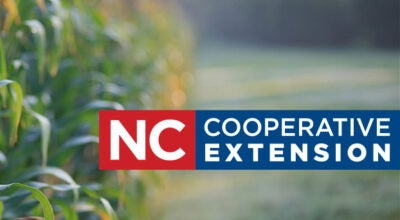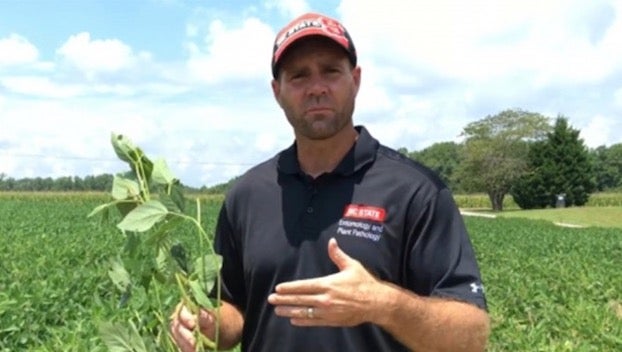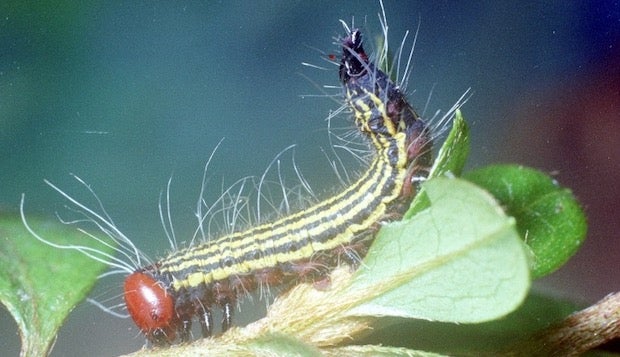Why the extension uses research-based information
Published 12:00 pm Thursday, March 4, 2021
|
Getting your Trinity Audio player ready...
|
Everyone once in a while, I get a little too big for my britches and think I can answer a question without looking up the research-based, unbiased University materials that make Extension relevant. That’s what North Carolina Cooperative Extension is here for, to give good, University researched information that will save you time and money. It is very humbling when you give someone the wrong information. That’s why I try really hard not to get ahead of myself and take the time to look it up.
A few weeks ago, I had a situation where I almost did just that. I have been busy this season, we’ve had a few nice days in between the rains and that’s when everyone seems to call. As a side note, sometimes I actually wonder if they have a secret society that gets together to plot when to call. I had gotten nine calls, four emails, and two or three text messages asking various questions from moles and voles to turf questions. Then there was one asking about spraying for oak gall wasps. This got my attention.
I had been working out a few Saturdays ago with my F3 brothers, near the tennis courts on Third Street when I noticed a live oak that was severely plagued with oak gall wasps. It was really interesting because it took me away from the pain our F3 brother, Columbus, was administering that day. The oak gall wasps are these tiny little woolly patches on the underside of the leaves along the midrib of live oaks.
Often, they go unnoticed until the leaves begin to fall on the ground under the canopy of the tree. These little woolly galls cause deformation of the leaves and chlorosis (yellowing) before causing the leaves to fall to the ground. It can be quite unsightly and alarming when a homeowner sees their prized live oak losing its leaves.
The call, from a homeowner who had gotten their information from a local landscaper, was asking how much imidacloprid to spray and when to spray it to get rid of the oak galls. This is what really caused me to think about the situation. Typically, extension does not recommend any action for oak galls. Even though the leaves dropping are cause for alarm, the situation isn’t dire for the oak tree. Oaks, in general, are host to many types of oak gall. As such, they are well prepared to be able to handle the minor damage caused.
Imidacloprid is in a class of pesticides called neonicotinoids. These are systemic insecticides that are generally applied as a soil drench, seed treatment, or on the foliage of plants. In the case of trees, the plant takes the insecticide up through the roots and then translocates it to different parts of the tree. These work really well for piercing-sucking insects that plague the trees. However, the issue that stands out here is that oak galls are not piercing-sucking insects, they are tiny larvae that will emerge as adult wasps starting the cycle over again. A side note on imidacloprid, be careful not to use this insecticide on flowering shrubs or trees, it has been shown to be harmful to bees. The gall wasp larvae do have chewing mouthparts but oddly enough, they do not feed on the tree.
So, conventional wisdom would have sent me looking for the rate and timing to use on oak gall wasps but a quick search for researched-based information led me to rethink what the client actually needed. He didn’t need a rate for the gall wasp because the gall wasp doesn’t even feed on the tree. If the wasp doesn’t feed on the tree and I am trying to kill it with a systemic insecticide that requires it to feed on the tree, I am not going to have much success. This costs money and time.
The damage to the leaves actually comes from an enzyme that is produced from the gall itself. The larva feeds upon this powerful enzyme. In fact, one factsheet from NCSU said that the plant tissue is remarkably altered even to the point of replication of chromosomes without cell division. That is biologist talk for it’s really cool! The moral of the story, the next time you are getting ready to spray for something, make sure you find the unbiased, research-based information before you do it.
I have a Warm Season Turf Update coming up on Tuesday March 9th from 9:00-11:00. Registration is required for this virtual event, visit go.ncsu.edu/bocoturfupdate2021 to register. You will receive the zoom meeting information before the meeting begins. Participants of this class will receive (2) L, D, N, X credits for their NCDA pesticide license and 2 “L” credits for their NC Landscape Contractor’s License. Please call the office or visit our website for more information, beafort.ces.ncsu.edu.
The Extension master gardener volunteers have a great project right now. They are putting together a Lunch and Learn series on how to grow a salad in a bucket. The series will begin Thursday, March 18 at 12:00 p.m. Check out next week’s article for information on how to register for this series. There will be six sessions, each on the subsequent Thursday at noon. Over the course of our thirty minutes together on zoom, we will go through the How To’s of growing your own salad in a series of five-gallon buckets. The program should take 15-20 minutes leaving 10-15 minutes for questions.
If you are having an issue in your home garden or landscape, send your questions to Gene Fox, Consumer Horticulture Agent with the North Carolina Cooperative Extension Service, please email at Gene at gene_fox@ncsu.edu or call at (252)946-0111. Learn more on Facebook at the Blacklands Area Horticulture page or visit the Extension Office located at 155 Airport Road in Washington, NC.
Gene Fox is the area consumer horticulture agent with North Carolina Cooperative Extension.





